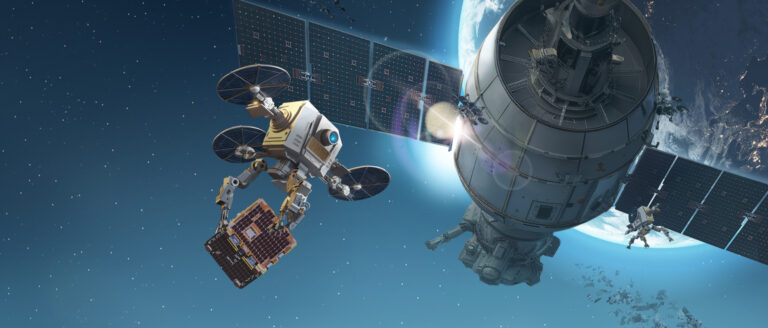In an ever-expanding New Space frontier, the buzz is real: Government bodies, startups, investors and original equipment manufacturers (OEMs) are getting on board the rising commercialization of space operations and exploration. After all, the New Space economy is expected to reach a market value of over US$1 trillion by 2030.
But there’s a catch. As the number of space missions skyrockets, so does the amount of debris. From defunct satellites and spent rocket parts to bolts, scraps and more, accumulating space junk is posing an increasing threat to space systems.
Realizing the true potential of the new space economy will require a shift in traditional paradigms — and recent advancements in space technology are emerging as the timely solution to a more sustainable space.
What is the most important space technology for space sustainability?
Space technologies with capabilities such as situational awareness, debris removal and life extension are critical in the path to a cleaner in-space environment. For example, orbital servicing vehicles aim to provide power or fuel in orbit to prolong satellite life. This reinvents the idea of “one and done” assets and spurs space sustainability by ensuring human-made objects are in space for a purpose.
From debris removal activities to repurposing spacecraft materials for new uses, these capability areas fall under In-space Servicing, Assembly and Manufacturing, also known as ISAM.
What is ISAM technology?
ISAM technologies encompass a broad suite of in-space capabilities, including:
- Space situational awareness and space object inspection and relocation
- Servicing: Altering or resupplying spacecraft
- Assembly: Aggregating or connecting pre-manufactured components
- Manufacturing: Transforming raw materials into components, products or infrastructure
How Does Digitalization Accelerate ISAM Development?
Digital solutions such as virtual twin technology and model-based systems engineering are helping new space players accelerate ISAM development by reducing business risk, enabling boundless innovation and bringing new ideas to life.
Dassault Systèmes’ virtual twin experiences offer a physics-based digital environment where companies can visualize, model and simulate the satellite’s entire lifecycle, along with the harsh space environment it’ll be operating in.
Powerful digital capabilities supplement the satellite virtual twin, such as:
- Model-based Systems Engineering (MBSE)
Designers and engineers can comprehensively analyze systems engineering choices and conduct trade studies to fine-tune the accuracy of proposals.
- High-fidelity simulation
Companies can cut overall demonstration timelines by simulating the structural performance of subsystems and components during satellite launch.
- Digital continuity
Connecting spacecraft design to operations and management enables space manufacturers to upgrade space systems and stay ahead in a competitive industry.
The new space industry is attracting more attention than ever before. As players strive to gain ISAM capabilities, virtual twin technology will be crucial to help them take the lead in the new space race while fostering a more sustainable space environment.

